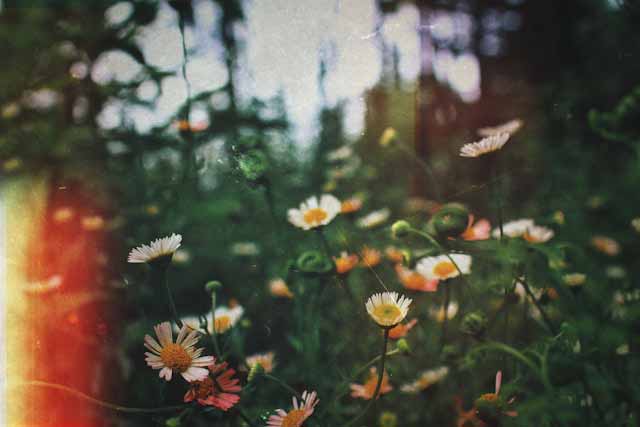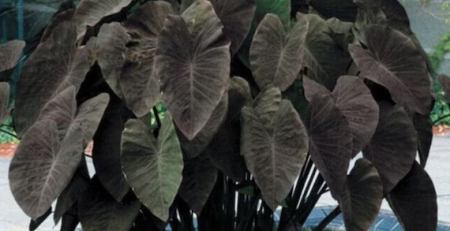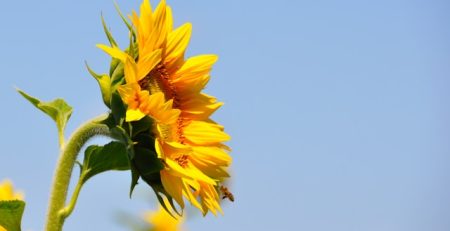Best Cut Flowers to Grow from Seed: A Comprehensive Guide
Introduction

Cut flowers bring a touch of nature’s elegance and beauty into our homes, making any space feel more vibrant and welcoming. Growing cut flowers from seed is a rewarding experience, allowing gardeners to cultivate a diverse range of blooms right in their backyard. This guide explores the best cut flowers to grow from seed, offering tips on cultivation, maintenance, and arranging them for the perfect bouquet.
Why Grow Cut Flowers from Seed?
Growing flowers from seed has several advantages:
- Cost-Effective: Purchasing seeds is generally cheaper than buying seedlings or mature plants.
- Variety: There is a wider selection of flower varieties available as seeds.
- Control: Starting from seed allows you to control the entire growing process, ensuring healthier plants.
- Satisfaction: The process of nurturing a plant from seed to bloom is immensely satisfying and fulfilling.
Top Cut Flowers to Grow from Seed
Here is a list of some of the best cut flowers that you can easily grow from seed:
- Zinnias
- Cosmos
- Sunflowers
- Sweet Peas
- Marigolds
- Larkspur
- Snapdragons
- Calendula
- Bachelor’s Buttons
- Asters
- Amaranth
- Nigella
- Scabiosa
- Stock
- Gypsophila (Baby’s Breath)
Detailed Guide to Growing Each Flower
In our ‘Detailed Guide to Growing Each Flower,’ you’ll discover the best cut flowers to grow from seed, ensuring your garden is filled with vibrant and fresh blooms.
1. Zinnias
Botanical Name: Zinnia elegans
Why Grow Them?: Zinnias are vibrant, long-lasting, and come in a variety of colors and sizes. They are also one of the easiest flowers to grow from seed.
Sowing: Direct sow in the garden after the last frost or start indoors 4-6 weeks before the last frost.
Care: Full sun, well-drained soil. Water regularly but avoid overhead watering to prevent powdery mildew.
Harvesting: Cut when the flowers are fully open. Zinnias have a long vase life of up to 10 days.
2. Cosmos
Botanical Name: Cosmos bipinnatus
Why Grow Them?: Cosmos are airy, delicate flowers that add a whimsical touch to bouquets. They attract butterflies and bees.
Sowing: Direct sow in the garden after the last frost or start indoors 4-6 weeks before the last frost.
Care: Full sun, average to poor soil. They thrive on neglect and don’t require much fertilizer.
Harvesting: Cut when the flowers are just starting to open. They last about 5-7 days in a vase.
3. Sunflowers
Botanical Name: Helianthus annuus
Why Grow Them?: Sunflowers are bold, cheerful, and can grow to impressive heights. They are excellent focal points in arrangements.
Sowing: Direct sow in the garden after the last frost.
Care: Full sun, well-drained soil. Water deeply but infrequently to encourage deep roots.
Harvesting: Cut when the petals begin to lift from the disk. Sunflowers have a vase life of about 7-10 days.
4. Sweet Peas
Botanical Name: Lathyrus odoratus
Why Grow Them?: Sweet peas are known for their delightful fragrance and delicate, ruffled petals.
Sowing: Direct sow in early spring or late fall in mild climates. Soak seeds overnight before planting.
Care: Full sun to partial shade, rich, well-drained soil. Provide a trellis or support.
Harvesting: Cut when the flowers are fully open. Sweet peas last about 5-7 days in a vase.
5. Marigolds
Botanical Name: Tagetes spp.
Why Grow Them?: Marigolds are bright, cheerful flowers that are easy to grow and have a long blooming season.
Sowing: Direct sow after the last frost or start indoors 4-6 weeks before the last frost.
Care: Full sun, well-drained soil. Deadhead regularly to encourage continuous blooming.
Harvesting: Cut when the flowers are fully open. Marigolds have a vase life of about 7-10 days.
6. Larkspur
Botanical Name: Consolida ajacis
Why Grow Them?: Larkspur adds vertical interest to arrangements with its tall, spiky blooms.
Sowing: Direct sow in early spring or late fall in mild climates. Stratify seeds by chilling them in the refrigerator for 1-2 weeks before planting.
Care: Full sun to partial shade, well-drained soil. Stake taller varieties to prevent flopping.
Harvesting: Cut when one-third of the flowers on the spike are open. Larkspur lasts about 7-10 days in a vase.
7. Snapdragons
Botanical Name: Antirrhinum majus
Why Grow Them?: Snapdragons have a unique shape and come in a wide range of colors, making them versatile for any bouquet.
Sowing: Start indoors 8-10 weeks before the last frost. Transplant after the danger of frost has passed.
Care: Full sun, well-drained soil. Pinch back the tips to encourage bushier growth.
Harvesting: Cut when the lower flowers on the spike are open. Snapdragons have a vase life of about 7-10 days.
8. Calendula
Botanical Name: Calendula officinalis
Why Grow Them?: Calendula, also known as pot marigold, has bright, cheerful flowers that are easy to grow and have medicinal properties.
Sowing: Direct sow in early spring or late fall in mild climates. You can also start indoors 6-8 weeks before the last frost.
Care: Full sun to partial shade, well-drained soil. Deadhead regularly to encourage continuous blooming.
Harvesting: Cut when the flowers are fully open. Calendula lasts about 5-7 days in a vase.
9. Bachelor’s Buttons
Botanical Name: Centaurea cyanus
Why Grow Them?: Bachelor’s buttons, or cornflowers, are charming, dainty flowers that add a touch of wildflower beauty to arrangements.
Sowing: Direct sow in early spring or fall. They can tolerate light frost.
Care: Full sun, well-drained soil. They thrive on neglect and don’t require much fertilizer.
Harvesting: Cut when the flowers are fully open. Bachelor’s buttons have a vase life of about 5-7 days.
10. Asters
Botanical Name: Callistephus chinensis
Why Grow Them?: Asters are late bloomers, providing vibrant color in the garden when many other flowers have faded.
Sowing: Start indoors 6-8 weeks before the last frost or direct sow after the last frost.
Care: Full sun, well-drained soil. Water regularly but avoid overhead watering to prevent powdery mildew.
Harvesting: Cut when the flowers are fully open. Asters have a vase life of about 5-7 days.
11. Amaranth
Botanical Name: Amaranthus spp.
Why Grow Them?: Amaranth adds dramatic texture and color to bouquets with its cascading blooms and foliage.
Sowing: Direct sow after the last frost or start indoors 4-6 weeks before the last frost.
Care: Full sun, well-drained soil. Water regularly and stake taller varieties to prevent flopping.
Harvesting: Cut when the flowers are fully open. Amaranth lasts about 7-10 days in a vase.
12. Nigella
Botanical Name: Nigella damascena
Why Grow Them?: Nigella, also known as love-in-a-mist, has unique, delicate flowers surrounded by feathery foliage.
Sowing: Direct sow in early spring or fall. They can tolerate light frost.
Care: Full sun, well-drained soil. Nigella thrives on neglect and doesn’t require much fertilizer.
Harvesting: Cut when the flowers are fully open. Nigella has a vase life of about 5-7 days.
13. Scabiosa
Botanical Name: Scabiosa atropurpurea
Why Grow Them?: Scabiosa, or pincushion flower, adds a whimsical touch to arrangements with its unique shape and variety of colors.
Sowing: Start indoors 6-8 weeks before the last frost or direct sow after the last frost.
Care: Full sun, well-drained soil. Deadhead regularly to encourage continuous blooming.
Harvesting: Cut when the flowers are fully open. Scabiosa has a vase life of about 7-10 days.
14. Stock
Botanical Name: Matthiola incana
Why Grow Them?: Stock has a lovely fragrance and dense, colorful spikes that make beautiful additions to bouquets.
Sowing: Start indoors 8-10 weeks before the last frost. Transplant after the danger of frost has passed.
Care: Full sun to partial shade, well-drained soil. Water regularly and provide support for taller varieties.
Harvesting: Cut when one-third of the flowers on the spike are open. Stock lasts about 5-7 days in a vase.
15. Gypsophila (Baby’s Breath)
Botanical Name: Gypsophila paniculata
Why Grow Them?: Baby’s breath adds a delicate, airy touch to arrangements and is often used as a filler flower.
Sowing: Direct sow in early spring or fall. You can also start indoors 6-8 weeks before the last frost.
Care: Full sun, well-drained soil. Gypsophila thrives on neglect and doesn’t require much fertilizer.
Harvesting: Cut when the majority of flowers are open. Baby’s breath has a vase life of about 7-10 days.
Tips for Growing Cut Flowers from Seed
- Soil Preparation: Ensure the soil is well-drained and enriched with organic matter. Most flowers prefer slightly acidic to neutral soil.
- Sowing Depth and Spacing: Follow the instructions on the seed packet for the correct depth and spacing.
- Watering: Keep the soil consistently moist but not waterlogged. Avoid overhead watering to prevent fungal diseases.
- Thinning: Thin seedlings to the recommended spacing to prevent overcrowding and ensure healthy growth.
- Fertilizing: Use a balanced, slow-release fertilizer or compost to provide nutrients throughout the growing season.
- Pest and Disease Control: Monitor for pests and diseases, and use organic or chemical controls as needed.
- Deadheading: Remove spent blooms to encourage continuous flowering.
Arranging Cut Flowers
When arranging your cut flowers, consider the following tips:
- Balance and Proportion: Use a mix of tall, medium, and short flowers to create balance and interest.
- Color Harmony: Choose a color scheme that complements the space and creates a cohesive look.
- Texture and Form: Mix different textures and forms to add depth and dimension to your arrangement.
- Foliage: Incorporate foliage to add greenery and fill gaps.
- Water and Care: Change the water regularly, trim stems, and remove any wilting flowers to extend the life of your arrangement.
Conclusion
Growing cut flowers from seed is a gratifying and cost-effective way to enjoy a continuous supply of fresh blooms throughout the growing season. By selecting a variety of easy-to-grow flowers and following the tips provided, you can create stunning bouquets that bring the beauty of your garden indoors. Whether you are a seasoned gardener or a beginner, these flowers will provide joy and satisfaction from the moment you sow the seeds to the time you arrange them in a vase.




Leave a Reply